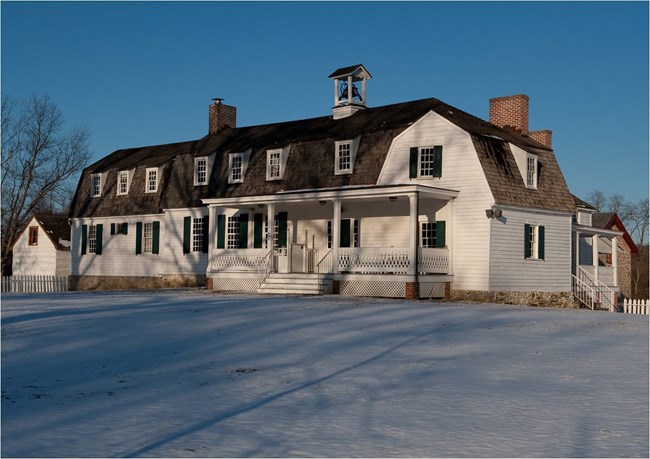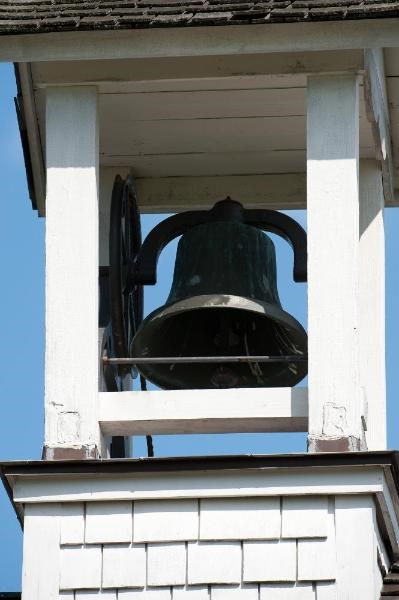
NPS/Tim Ervin Built in the eighteenth century, the Lower House is the oldest extant building on the Hampton property. During the second half of the eighteenth century, the house served as a temporary residence while the Ridgelys were visiting their iron works and later during construction of the Mansion. Around 1745, the original one-story structure was built. Later, it was expanded to include a three-bay-long addition to the north. Later in the eighteenth century, the older portion of the house was moved approximately 10’ south, and a single-story link was built between the two portions. Renovations to the interior of the house were made in the second half of the eighteenth century (circa 1780), possibly to prepare the residence for Captain Charles Ridgely while the Mansion was under construction. 
NPS/Tim Ervin In 1840, the Lower House was expanded to include a three-bay east wing, and porches were built on the east and south façades of the wing. Other alterations to the Lower House during the 1800s include the addition of the west porch, expansion of the kitchen in the 1800s, and replacement of the link by 1900. Alterations in the twentieth century include installation of electricity and plumbing, and the removal of the west porch. |
Last updated: July 29, 2020
